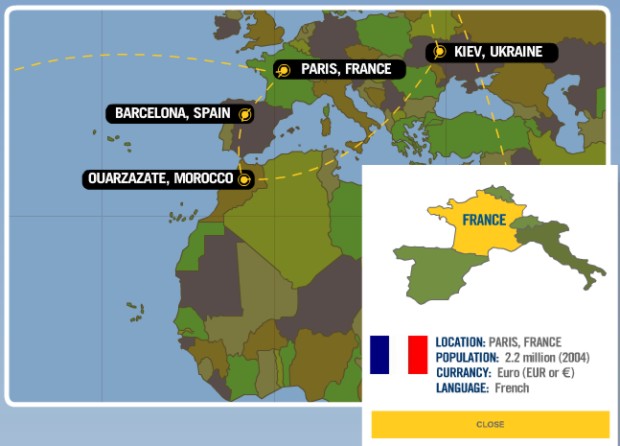|
Everything seems more glamorous in Paris. Whether it is strolling down the rive-gauche on a spring afternoon, or sitting watching the world pass by in a small café in the arts district, Paris adds an allure and glamour that is all its own. Paris, dubbed "the city of light" in the 19th century, is the capital city of France and occupies the right and left banks of the river Seine in north-central France. The city plays host to France's economic, business and political centers, and produces more than one quarter of the country's wealth.
Renowned for its neo-classical architecture, Paris is home to many world famous museums and galleries such as the Louvre and the Musée Rodin. One of the best known landmarks in the world is Paris's very own Eiffel Tower, which stands an impressive 1063 ft above the city. Sightseeing in the city is like taking a trip into ancient history with old Roman remains, grand medieval abbeys, gothic masterpieces, classical architecture, and collections from Napoleonic times on offer.
There are over 180 museums and monuments to discover, as well as world famous collections of paintings, sculpture and decorative arts. It is no wonder then that Paris is regarded by many as one of the most beautiful and romantic cities in the world, and one of the most visited cities with more than 30 million foreign visitors per year. Paris is a must see for all travelers looking for a spectacular experience in a truly magical city.
|
|
The Eiffel Tower
The Eiffel Tower dates back to the late 19th century when it was constructed for the Universal Exposition celebrating the centenary of the French Revolution in 1889. Built of iron, the structure took two years, and over 50 engineers, 100 ironworkers and 121 men to build. The tower, now standing 324 meters high, takes pride of place on the Champ de Mars on the banks of the River Seine. It is the tallest structure in Paris and most likely the most recognized symbol in Europe. At night time, when the Eiffel tower is lit with over ten-thousand lights, the twinkling symbol of all France is a breathtaking sight to behold.
Musée du Louvre The Louvre Museum has a regal history as it was the former residence of the Kings of France until 1793. Since then, the Museum has undergone successive architectural metamorphoses, and has dominated central Paris. The Louvre is situated on the city's western edge, but the original structure was gradually engulfed as the city grew, transforming the former dark fortress-like structure into the modernized dwelling of François I and, later, Louis XIV. Today, the Louvre is one of the French capital's most renowned sites. The Louvre has eight major exhibition areas including: Near Eastern Antiquities; Egyptian Antiquities; Greek, Etruscan and Roman Antiquities; Islamic Art; Sculptures; Decorative Arts, Paintings and Prints and Drawings. The best known of the Louvre's collection of Italian paintings is undoubtedly the famous Leonardo da Vinci painting, the Mona Lisa.
Cathedrale Notre-Dame de Paris
The Notre-Dame de Paris was built during the 12th to the 14th century. The cathedral, with its twin towers and three sculpted portals, is an instantly recognizable Parisian landmark located on the banks of the River Seine. The cathedral was immortalized in Victor Hugo's novel, The Hunchback of Notre Dame, and walking through the opulent pews of the cavernous structure, visitors can easily imagine the reclusive Hunchback dwelling in the towers high above. The structure is a Gothic masterpiece, enhanced by delicate stone filigree work and intricate stained-glass windows, some of which date back to the Middle Ages. Equally notable are the cathedral's ghoulish gargoyles that adorn the roof gutters of the building and peer down at all of Paris below.
|




